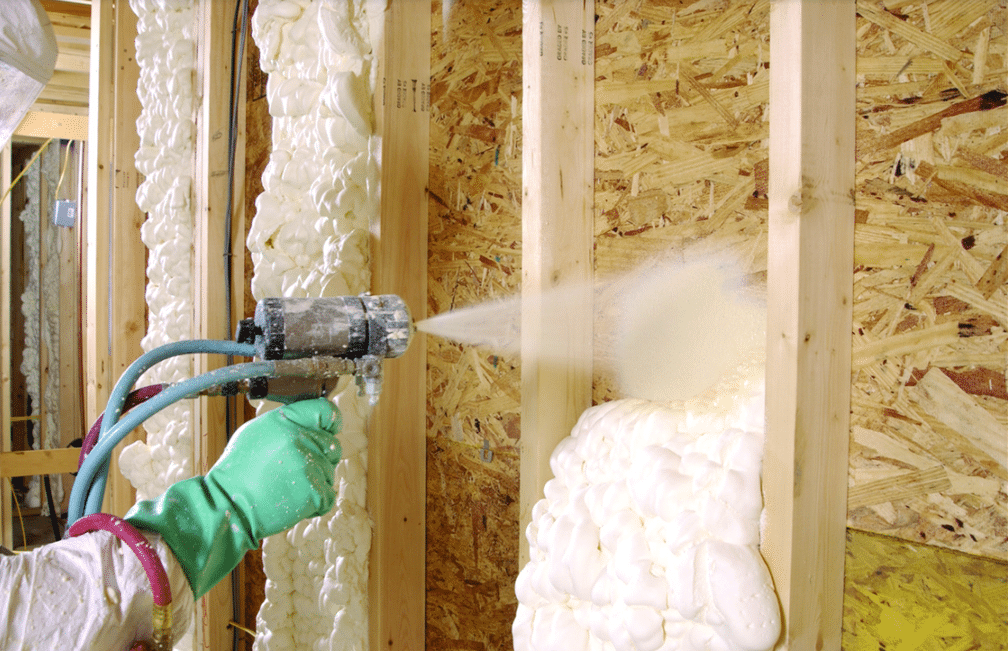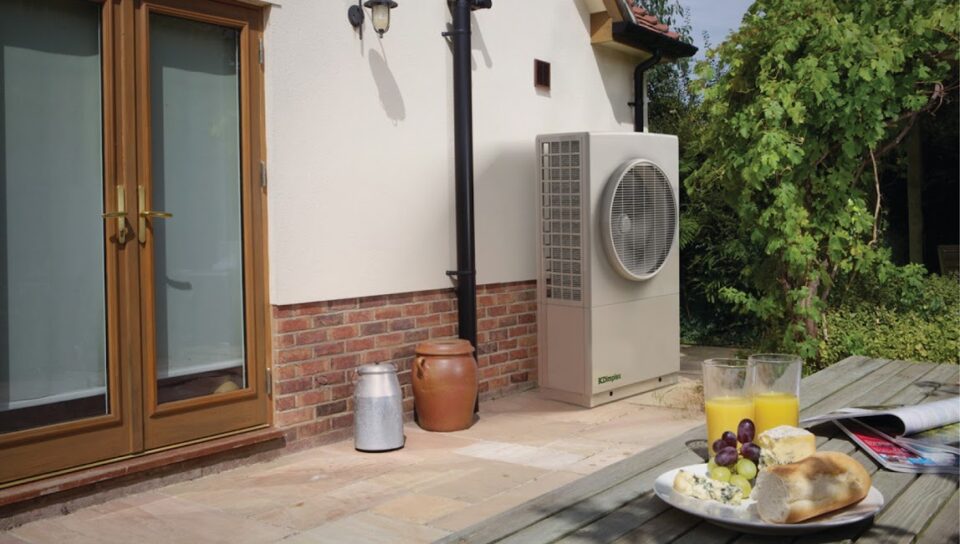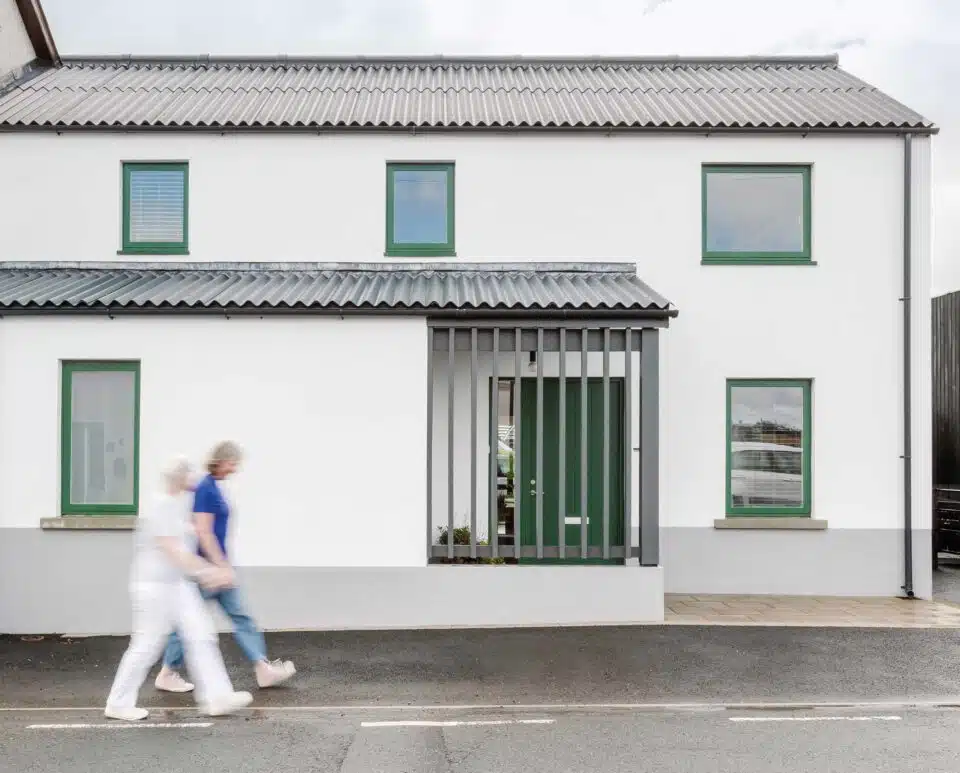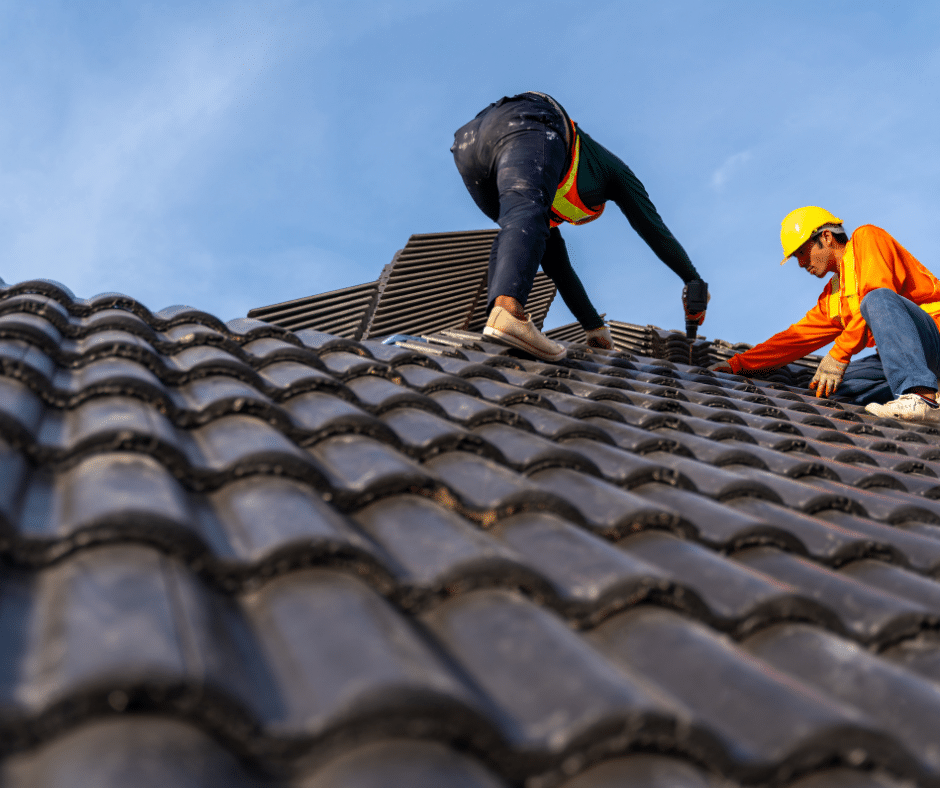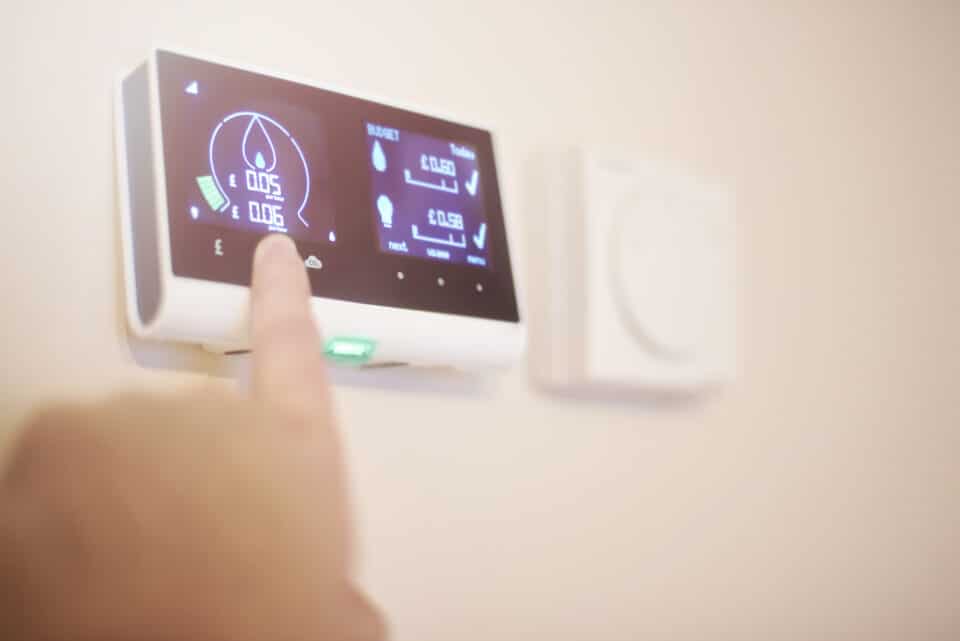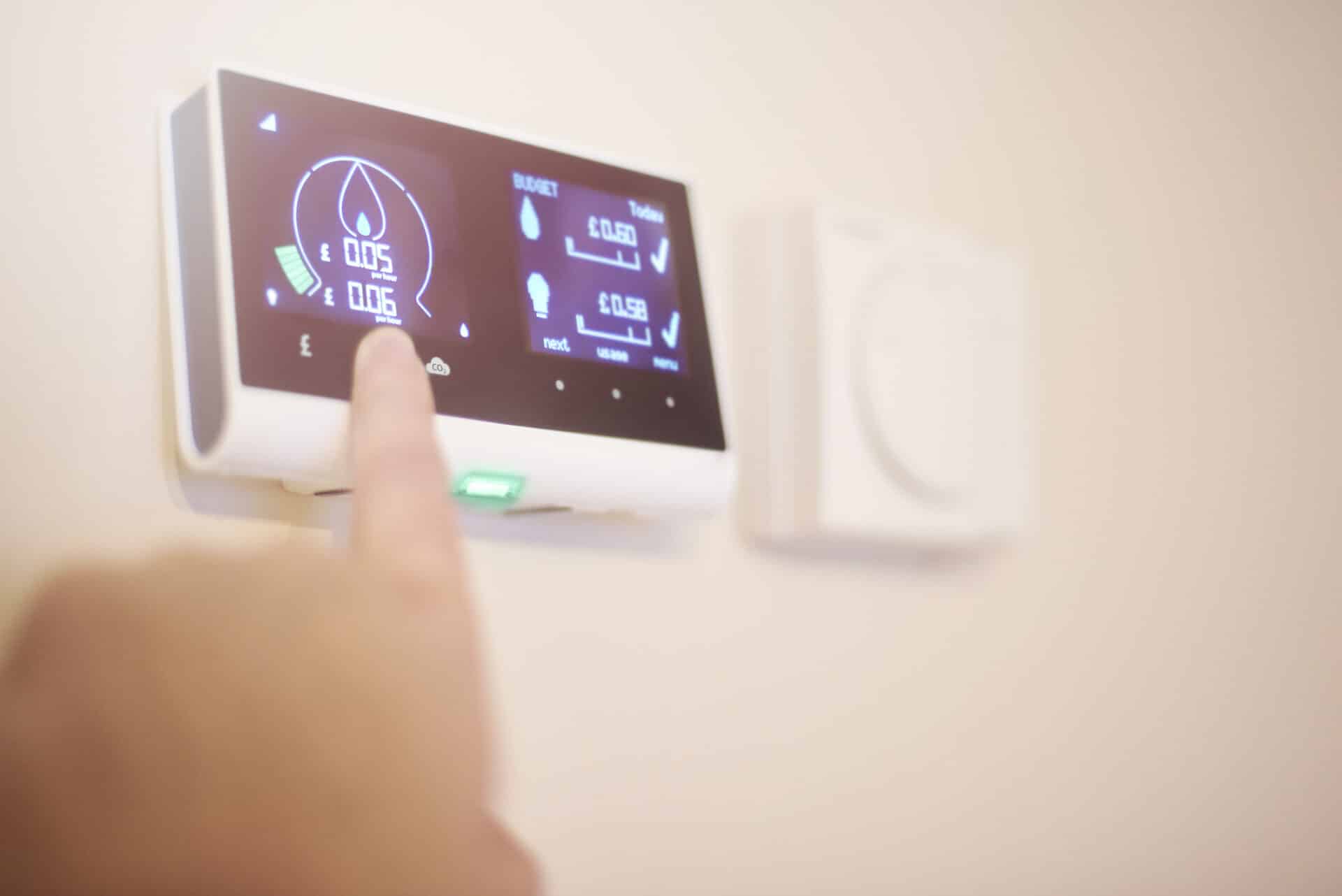U-value: sound familiar? Do you know what it means and why you should? Something to do with energy? That’s getting warmer, and so will you if make sure you are fully aware and understand their importance when you design and build your new house, extension or renovation.
Definition
U- values are all about the rate at which heat passes through a material; this is known as “thermal transmittance”. In building it is used to indicate how well each section of the fabric – floor, roof or wall – will help the house to retain heat. The quicker heat passes through the material, the poorer it is at insulating and so it is given a high number. Materials with low U-values therefore are good at helping your house to retain its heat.
U-values are expressed in W/m2K – Watts per square metre Kelvin – that is, the heat energy transmitted per square metre of element and temperature difference either side of the element (Kelvin is equivalent to °C in terms of temperature difference). As Sir Isaac Newton told us, heat flows from a hotter body to a cooler one and it’s just the same in our houses as we try to keep the inside temperature comfortable when it’s cold outside, or vice versa on a hot summer’s day.
If we know the area and U-value of a material, as well as the temperature inside and out, we can calculate the “steady state” heat loss (Watts) from the house. Back in the days when oil was plentiful and we were not as conscious of waste, this is how heating installers worked out how many radiators and what size of boiler you needed. Because it was based on making sure you were able to put enough heat into the house to keep it warm on the coldest day of the year, this approach tended to oversize boilers and radiators.
Nowadays we use U-values to indicate the overall energy efficiency of the building fabric and to allow comparisons to be made between different methods of construction and building materials. They are also used to express the legal minimum energy performance requirements in the Building Regulations.
Although I work every day with them, it was only when I came to write this article that I realised I didn’t know where the name came from! The earliest reference to U-values that I could find was 1949 and the answer seems to be simply an abbreviation for “Unit-value”, that is, the heat energy passing through a “unit” of material under a given temperature difference.
Why are U-values important?
First and foremost because of Building Regulations: Part F in NI and Part L in ROI. Theses require that elements of new buildings (and extensions and change of use) do not exceed certain maximum permissible U-values, representing minimum energy efficiency performance.
Prior to the latest revision of the Building Regulations in NI, compliance with Part F could be demonstrated in one of two ways – the Elemental Method and the Calculated Trade-off Method. Part L in ROI took a similar approach, with the Elemental Method and the Overall Heat Loss Method. With the elemental approach, you had to ensure that the U-values for each building element did not exceed a maximum permitted value. Parts of an individual element (eg part of the walls) were allowed to reach a certain higher maximum value, provided the area-weighted average U-value for all parts of that element did not exceed the maximum overall value. This is still represented in the current Building Regulations via the “long-stop U-values” – values which you are not allowed to exceed. However, compliance depends on other factors too (such as air-tightness, heating system efficiency and use of low carbon technologies), which all contribute to the carbon dioxide (CO2) emissions rate. To comply with the Regulations in NI, the Dwelling Emissions Rate (DER) must not exceed the Target Emissions Rate (TER).
The reason for the long-stop U-values is in case, for example, a low carbon heating system was used which, typically, would easily allow the dwelling to comply on DER/TER. By giving upper limits for the fabric as well, that ensures all the benefit from the heating system isn’t then lost through a poorly insulated fabric. In addition, you only put insulation in once (except, perhaps, in your roof space) so not only should it be done correctly, to future-proof the house you should use as much as budget and design allow.
It’s exactly the same in ROI (we’re all part of the EU now), with maximum overall and area-weighted U-values for each element. In addition, you must not exceed the maximum permissible energy performance coefficient (MPEPC), in primary energy terms, and the maximum permissible carbon dioxide coefficient (MPCPC). Both of these requirements are based on a Reference Building to assumed standards.
How to calculate a U-value
The easiest way is to use a U-value calculator on your pc, or through using SAP (Standard Assessment Procedure) or DEAP (Dwelling Assessment Procedure).
In the absence of these, and if you’d like to give your brain some exercise, you can still do it manually which does help to give a better understanding of the meaning of U-values and what they represent.
Note Americans tend to use and refer to R, for thermal resistance, which is the reciprocal of our U-value. This has the advantage of giving a bigger number for more insulation which is often easier to relate to.
For us, lower is better. In NI, a U-value of 0.35W/m²K for external walls is the maximum permissible average area-weighted value; in ROI it is 0.27 W/m2K.
When working out a U-value, you begin with the R value. The R value is the sum of the individual resistances (r) of all the material layers in the element. The individual resistances are calculated from the thickness (l) of the material divided by its thermal conductance (k-value), a physical property which varies from one material to another, but is constant for a given material. The full calculation procedure is thus;
r=l/k
R = (r1 + r2 + r3 + …etc)
U = (1/R).
U-values for Windows and Doors
Having really good U-values for your walls, roofs and floors and not paying attention to the openings rather defeats the object of building a very thermally efficient house.
In a home built to current minimum standards with a fairly average glazing ratio (about 15% – that is, ratio of openings to wall area, the U-value for the openings is typically around ten times that of the other elements), the heat loss from the openings can easily be equal to that of the walls. It therefore makes a lot of sense to put in the best thermally-performing glazing you can and allow for this within your budget. I am currently building a house in which I am using triple glazing with two soft low-E-coated panes and Argon gas in between each glazing layer. This specification (depending on the size of the unit and thus the frame to glazing ratio), gives a U-value of between 0.99 and 1.01 W/m2K. Low-E (low emissivity) glass has a microscopically thin metallic layer on the outer face of the inner pane in a multiple glazed unit, which reflects into the building some of the heat which would otherwise be lost to the outside.
When calculating a window U-value, including the heat lost by the frame is important because this is where a large part of the loss occurs. Occasionally you may see what seems to be an unusually low U-value quoted by a glazing manufacturer or supplier. It is possible that the value for the centre of the pane has been quoted which does not take into account the frame edge losses. So check to make sure that a figure is available for the unit in a frame of a given size, to allow direct comparisons with other glazing types on the same basis. As we have seen, because they do not contain the frame element, centre pane values do not help you to estimate the actual heat loss rate from your house. Spacers should be of the insulated type, which greatly reduce edge losses. You should also take into account “thermal bridging” at the junctions of elements, around openings, in timber studs including roofs, etc.
BFRC Rating
The British Fenestration Rating Council, (BFRC), has devised a system for comparing the overall energy performance of different window systems. It is similar to that for white goods with colour-coded letter-ratings, from A (most efficient) to G (least efficient). Energy is also expressed in terms of kWh/m²/yr. Most glazing will have a negative rating, indicating net heat loss throughout the year. However, some of the higher performance units can have a positive figure, indicating a net heat flow into the building. At present this system is voluntary, though in time it may replace U-values as the method of expressing the energy performance of glazing systems.
Door Systems
Most external doors are made of solid timber or uPVC. In both cases, with no glazing the U-value is of the order of 3.0 W/m²K, while half-glazed (double glazing, standard glass) gives around 3.1 W/m²K and fully glazed around 3.3 W/m²K. With good levels of draught-stripping there is little to choose in thermal terms between the two materials. However, uPVC does not score highly on overall environmental performance and some timber external doors may be made from tropical hardwoods, which are not preferable for wider ecological reasons.
Alternatives to these are doors which offer improved thermal performance without all the environmental downsides of uPVC and tropical hardwoods. Steel or fibreglass panel doors, with a polyurethane foam core can give U-values as low as 0.3-0.5 W/m²K for an unglazed door. If a glazed section is included the U-value will increase, and the more glass there is the more important your choice of glazing becomes. Double glazing with low-E glass is recommended as a minimum. Pane separation is likely to be restricted by the depth of rebate which can be accommodated within the thickness of the door.
Note that the thermal performance of your door will be irrelevant if it is open! A draught lobby on the entrance you use most can greatly reduce the amount of heat lost when entering and leaving the house.
What U-values should I Use for a new dwelling? Are the Building Regulations minimum standards enough?
In the past I have had no hesitation in saying “Do not limit yourself to the Building Regulations minimum – put in as much as you can – you will not regret it”. Insulation is relatively cheap and is easily installed during construction. Retrofitting is practically impossible where floors are concerned, and not easy with walls.
Historically, the Building Regulations minimum has been very much the legal minimum and not in any way the energy-efficiency or economic optimum. Nevertheless, as the construction industry is very much cost-driven, the cheapest is generally adopted, especially by volume builders. Therefore the Building Regulations minima are rarely bettered. Because of this, and in response to the national carbon dioxide emissions reduction targets, the new Building Regulations thermal standards in both jurisdictions have been tightened up considerably in recent times. But it is always possible to do better.
But wait a minute, you may say, what about the law of diminishing returns, whereby you get progressively less and less energy saving from successive layers of insulation? Correct. Starting with nothing at all, 150mm of roof insulation will make a big difference, while a further 150mm will cost the same as the first 150mm but will not save as much energy and thus will not be as cost-effective. A total of 200mm of mineral fibre in your roofspace will give a U-value of around 0.25 W/m2K. An additional 70mm will reduce that to about 0.16 W/m2K, while a further 30mm (total of 300mm) will take it down to around 0.14 W/m2K.
The answer is two-fold. As it is likely that energy will get more expensive during the lifetime of your building, the economic viability of insulation installed now will only improve with time. Insulation generally pays back within about 5 years, but, as prices rise this shortens that payback time.
Secondly, there comes a point where there is a step change. You reach a level of insulation so good that you do not need a conventional heating system because the house can maintain comfort temperatures at most times with just the internal gains from occupants, lighting, etc and solar gains. If you can save altogether on the capital cost of a heating system as well as running costs, forever, that improves the economics of the extra insulation considerably. You may need a small amount of heating during the mid-heating season, though good design for wintertime passive solar gains will reduce this.
Of course, you do not want to take a chance and find out during your first winter that you really did need a heating system after all! It would prove very costly and disruptive to retrofit heating after your house is finished. If you do want to go down this route, detailed calculations by an energy professional are essential. A consultant may be able to use computer models which can simulate the effect of internal and solar heat gains on internal temperatures, using averaged weather data (solar radiation levels, outside temperatures, etc). By building up a mathematical thermal model of your house, the thermal behaviour of the building fabric can be taken into account and overall heat gains and heat losses calculated.
Example Fabric Specification for Super-Insulated Houses
As mentioned above, the glazing is always going to be the thermally weakest point.
Low-E coated double glazing with 16mm gap in a wooden frame will give you a glazing U-value of 1.8-2.0 W/m²K depending on the type of low-E glazing (see table above). However, this will be around ten times the overall target U-value, requiring the walls, floors and roofs to achieve even higher levels.
If you use triple glazing, with low-E coating and inert gas fill, the situation improves greatly and it will typically give you a U-value (in a wooden frame) of 1.3-1.5 W/m²K).
Let us take as a starting point a wall U-Value of 0.2 W/m²K. With a roof U-value of 0.13 W/m²K and floor U-value of 0.22 W/m²K this should give you an overall opaque fabric U-value of around 0.19 W/m²K, depending on the ratio of wall to roof/floor area (I have assumed a 2-storey detached house of plan area 8x6m with roof insulation on the plane). Taking into account glazing with a U-value of 1.5 W/m²K and a glazing ratio of 15%, the overall U-value (including glazing) would still be around 0.3 W/m²K. With a wall U-value of 0.1 W/m²K, the overall U-value, with the same glazing U-value and ratio, would be about 0.25 W/m²K. Substituting glazing with a U-value of 1.1 W/m²K would bring you down to around 0.22 W/m²K overall. You can see how hard it becomes to make further improvements!
Achieving this level of wall U-value could be done with masonry cavity construction, but would take some combination of AAC block, full-cavity insulation, wider cavities and internal dry-lining. However, you will find it much easier with a construction which allows a greater thickness of insulation for a given overall wall depth (eg timber frame, SIPs, ICF etc.). This is due to the insulation being accommodated within the structural component (the timber stud) instead of adjacent to it (in masonry construction).
Limitations of U-values
Knowing the U-value for each of part of the fabric as well as the temperature inside and out allows us to calculate the “steady state” heat loss (Watts) from the house. Using only this information to size a heating system is not very accurate as it does not take into account the dynamic behaviour of the building (variable heat flows, intermittent occupancy, effect of thermal mass, etc) and thus cannot accurately predict how much heat input you will actually require.
Also, U-values only represent the fabric thermal heat loss rate; they cannot easily tell you how much heat a building will lose in reality. The amount lost through ventilation for example, and especially in a highly insulated home, is very significant.
Neither can U-values take into account the heat gains available from the sun, which can also make an appreciable contribution, particularly where there is a lot of south-facing glazing. Having said that, U-values are a good starting point in specifying a super insulated house, or even one that doesn’t need any additional heating.
U-value calculators
Working out the U-value of a wall, for example, on paper, requires knowledge of the thermal conductivity (k-value W/mK) and thickness of each material in the wall so that you can calculate the individual resistances of the materials and thence the overall resistance and U-value. The dimensions can be taken from drawings or assumed at early design stage for a new house but the k-values will need to be found from a materials database.
It’s much simpler is to use a computer programme which will not only carry out all the calculations in the blink of an eye, but provides a database of different types of materials with their k-values hard-wired; all you have to do is specify the thickness of each material in order.
Summary
Insulation is relatively cheap and you only fit it once so fit it thoroughly and well. The lower the U-values the lower the heat loss rate and the less energy you will need to put into your house over its lifetime. If you go far enough you can reach passive house standard and not need a conventional heating system at all.
This article has looked at U-values and fabric insulation only. In a full heat loss assessment you would need to take into account ventilation heat losses (with or without heat recovery) and possibly the potential for solar gains as well as other internal heat gains from occupants, lighting and equipment, especially if trying to design out the heating system. You would also need to represent the changes in seasonal external temperatures in order to estimate actual heat loss rate over the year. However, start with the basics – get the fabric right and everything else follows.

